It’s January and as the New Year gets going, it is once again time to set new goals to welcome us into an exciting new era. Gym memberships, healthy diets, and new business ideas are spreading like wildfire as the world leaves the old year behind. For the equestrians of the world, there is no timing more perfect than now to reevaluate riding and training goals to help develop healthier and stronger relationships with our furry four-legged friends. Whether it’s working on bettering ourselves as trainers or improving even the simplest of equine habits, thinking with SMART principles can drastically strengthen the human-to-horse connection. By following these few simple tips and tricks, you and your humble steed will be well on your way to a healthy and mutually advantageous relationship for years to come.
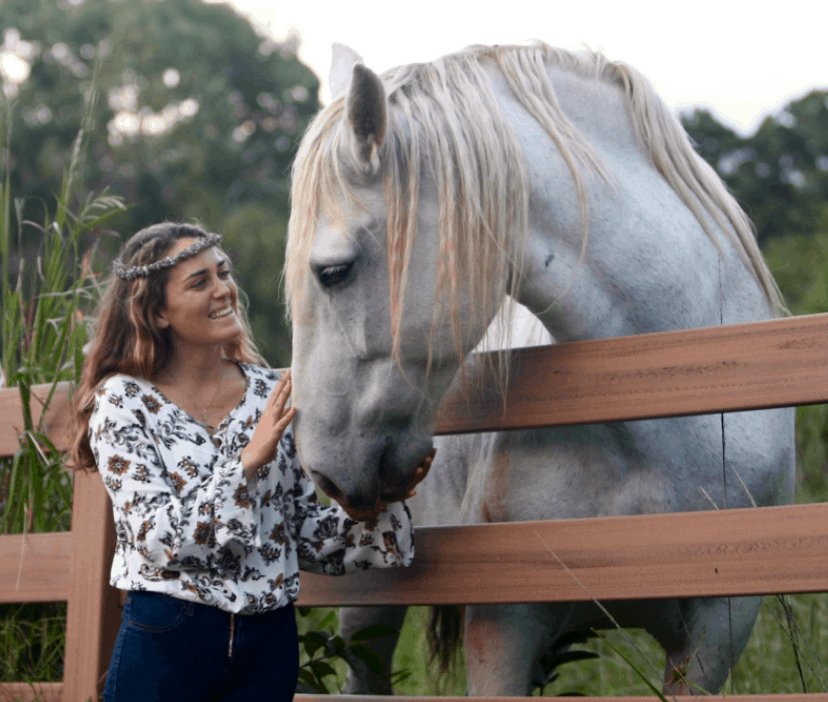
Understanding the Goal/Habit
Incorporating a new goal or habit into one’s lifestyle is no easy task. Despite the tempting inspirational blogs and trendy influencers using headlines such as “life-changing” and “simple steps”, the act of actually forming a new habit is a bit more complex. Then add a thousand-pound animal into the mix, and things can get a bit more complicated. In no way does this truth take any value away from the habit or goal, yet simply means as equestrians, we must apply more effort when it comes to New Year’s resolutions. But with the right motivation, information, and application techniques, anyone can reach their desired equestrian accomplishments.
The Science Behind Goals or Habits.
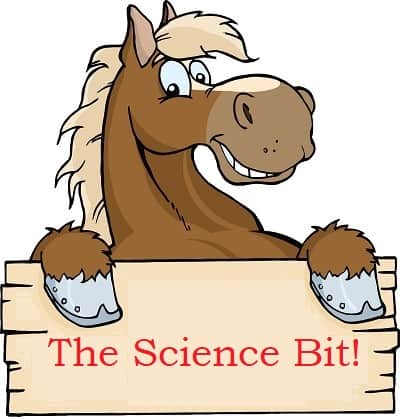
According to Britannica.com, a habit is defined as “any regularly repeated behavior that requires little or no thought and is learned, rather than innate. The behavior becomes more automatic with each repetition”. Most habits are associated with a release of dopamine when performed, clueing into why they become a continued behavior. The brain learns to enjoy these behaviors as they become more efficient and automatic, giving a wider mental capacity for the more taxing tasks.
When it comes to adding or changing a habit, this is where most individuals run into trouble due to their lack of understanding. In 2009, the European Journal of Social Psychology conducted a study focusing on the science behind habits. It was concluded that it takes approximately 18 to 254 days for a person to form a new habit and that on average it takes about 66 days for a new behavior to become automatic. That’s quite a bit of wiggle room when considering introducing a new habit to your equestrian lifestyle. At this rate, you might even be asking yourself: “Is it even worth it? The answer, although taxing, is an outstanding YES! Because even though habits seem like daunting tasks, when they involve the betterment of our humble steeds, it’s a task worth the effort.
So how do we go about changing or adding a new habit into our equine regime?
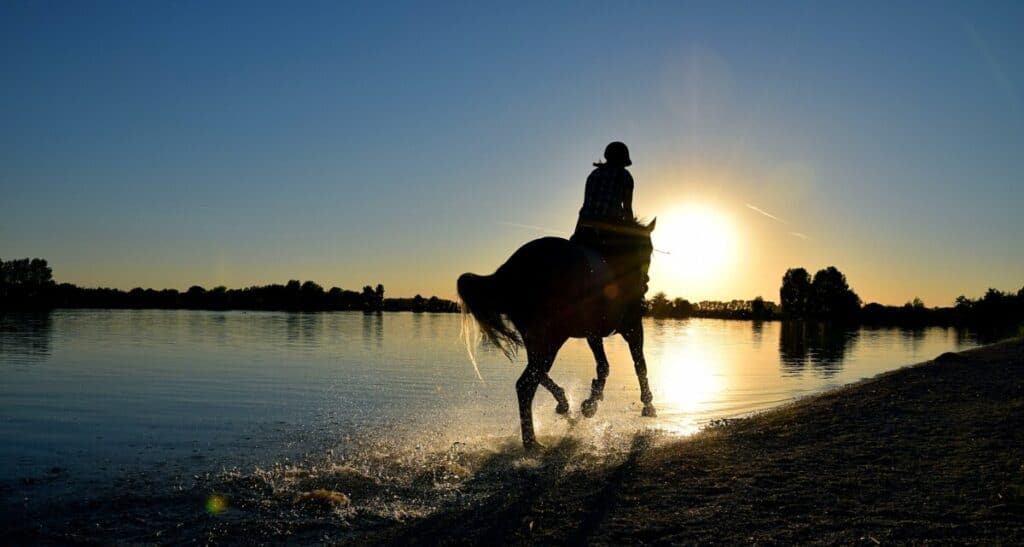
Changing a Habit
While it seems a challenge, with a little motivation and repetition, goals and habits can become a vital new addition for any equestrian’s technique. If you find yourself occupying an undesirable habit and feel the need for change, the first step is simply acknowledging its existence. By becoming more aware of it, your mind can start to think more critically about that habit’s contribution to your overall functionality. For instance, let’s say a rider experiences a bad riding accident at a specific spot in the arena. Following the incident, they develop a flinch every time they ride past that particular spot, putting a strain on both horse and rider. In this case, it is best to take things slowly by first acknowledging the flinch and understanding how it has negatively impacted their horse-to-human riding ability. The next step involves the changing of your behavior towards the event and the people and animals it incorporated. In such a scenario the rider could begin in their mind to associate that particular horse with a positive outcome to try and reframe their overall attitude towards the habit. By doing so, you start to only look for the positives in your riding practice, allowing you to focus on your lead changes or diagonals rather than the fall.
While it may seem blunt, you can even swap a bad habit with a good one. This tactic takes place on a much smaller scale but nevertheless important. For example, if you are assigned to ride “Mr. Bucks-A-Lot”, your initial response might be: “Ugh, I have to ride him”. For the purposes of keeping things simple, try and rework your phrase with one positive word and you might find yourself a little bit more prepared. For instance, try saying, “I get to ride him”, and see how that slight change can make a dramatic impact on your riding experience. A trick like this seems like a drop in the ocean, but as you begin to add up all the little drops, you will start to see an ocean of change, as corny as it sounds. The trick is to stick with it.
But how do you stick to your goal-setting attitude?
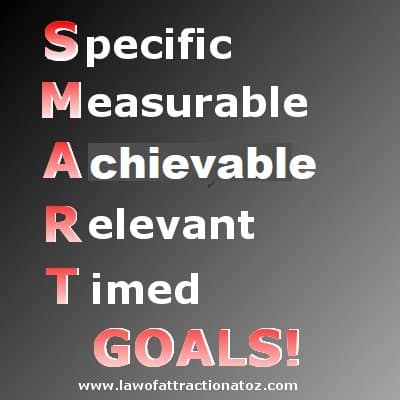
Equine Journalist Andrea Harrison makes setting goals and sticking to them a walk in the park with her 5 letter acronym: S.M.A.R.T – Specific, Measurable, Achievable, Relevant, and Timely. Each word carries out a crucial step in maintaining a healthy relationship with your goals and habits, laid out in an easy-to-remember fashion.
Step 1 – Specific
When setting goals and future accomplishments it can be extremely tempting to aim for bigger-than-life ambitions as you get caught up in the novelty of the New Year. Surrounded by many others who have desirable riding attributes and qualities, you tend to crave them, which leads to the creation of goals that are way too general to fully reach. Don’t get me wrong, I am a big believer in dreaming big, but in order to achieve such a dream, you have to focus on the many little steps to reach the castle.
When thinking up a goal, get specific about what you want to achieve and what you need to do in order to make it happen. For instance, if you decide you want to become the 2021 Hunter Jumper Champion of your age division, think about the many steps that bring you to the gold. The weeks of training, the entry fees, the prior show winnings and more are all elements that bring you closer to your goal. In this case, think of all these steps as mini-goals, or checkpoints as you climb the ladder to success. The more specific you are about your goal-setting, the greater are your chances of victory.
Step 2 – Measurable
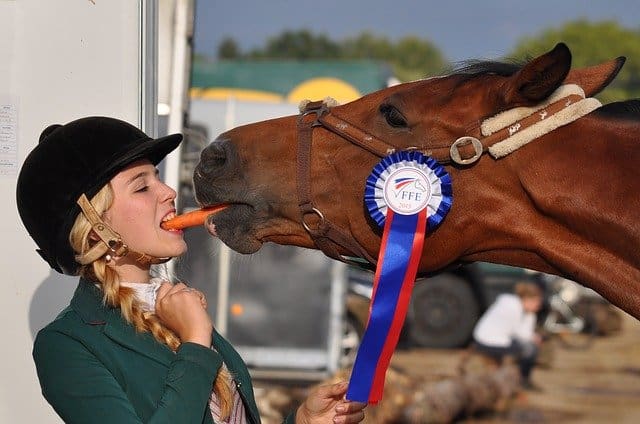
Success can be a hard goal to measure, but never impossible. As you set your goals, assign emotions, placeholders, titles, or anything else that will help you measure your progress on the road to your ultimate goal. Think about what you will feel, see, or even hear when that particular goal is reached. In other words, try to break down your goal into measurable elements that will in turn act as evidence of your successes. While doing so, try to set only positive attributes to your goal’s progress, which will help keep you on the right track.
Think about it like this: You are training your new colt in the art of liberty work, working up to a bareback sliding stop. As this goal doesn’t just happen overnight, you start to set checkpoints that help your team get closer to achieving that perfect sliding stop. So maybe the day you and your humble steed are able to ride as a team with only a simple neck string acts as one of your many checkpoints. These measurable moments will also act as mini motivators as you go along, propelling you and your pony to keep going and keep pushing the limits. As these little moments add up, you will begin to see them all falling into place until one day you’re sliding into the sunset.
Step 3 – Achievable

Ask yourself: Is this goal actually achievable? Although life should be lived with high-ambitions, it is easy to lose focus on a goal that has stepped outside of the achiever’s capacity. Make sure to research that particular goal and the parameters it will require in order to be successful. Are those parameters within you, and most importantly your horse’s reach? For example, hoping that your nineteen-year-old hunter-jumper will one day re-enter the show ring might be more of a fantasy than a goal. By setting an unachievable goal, you are almost automatically putting yourself and your steed in a position of failure, which can have a drastic effect on your team’s overall motivation. Be sure to understand the time, cost, and dedication it will take to complete your goal and weigh the advantages to the disadvantages before diving in headfirst. In no way shape or form, are these simple facts a way of deterring you, but simply informing you, so that you may better understand what is to come.
Step 4 – Relevant
Is this goal relevant to you and your horse? While this question may be silly, it is far-to-often overlooked. The world is filled with remarkably talented equestrians, from world-renowned Olympic riders to self-made horse whisperers. Their presence is motivational and inspires the many to reach for their talents, making it increasingly easy to set irrelevant goals. For instance, a young hunter-jumper watches US Champion Barrel Racer, Mary Burger, as she sweeps the 2012 Calgary Stampede and suddenly decides to follow in her footsteps. While her goal is everything but impossible, she is riding a Welsh pony without the speed or stamina for the sport of barrel racing. In this case, the overlying goal can begin to cloud the reality of relevance to that young rider and most specifically her pony’s physical capabilities. By defining your relevance to that particular goal, you can begin to better comprehend why you want to reach it in the first place and how it is a goal that defines your equestrian desires.
Step 4 – Timely
Similar to setting measurable checkpoints, be sure to plan out your goal’s execution with careful consideration of time. While you should try to lay out your plan with plenty of wiggle room for inevitable unexpected bumps, following a timeline can help to keep your goal on track. While setting a timeline and fitting in your measurable checkpoints, avoid the temptation of setting unrealistic deadlines. These deadlines will only inflict more stress and work, which can lead to the loss of interest. Think about it like this: You are training your young Warmblood for the upcoming show season, but you begin to realize that your dearest needs more time. But instead of listening to that instinct, you make a goal to enter him at the end of year show, giving your team only a month to prepare. Now, you have not only set an unrealistic deadline, but also an increasingly unattainable goal. Try instead to take pleasure in the training process and enter in the next show to ensure plenty of time for preparation. Don’t rush the process of progress, as it comes in slow increments, but rather enjoy the ride.
Enjoy The Ride
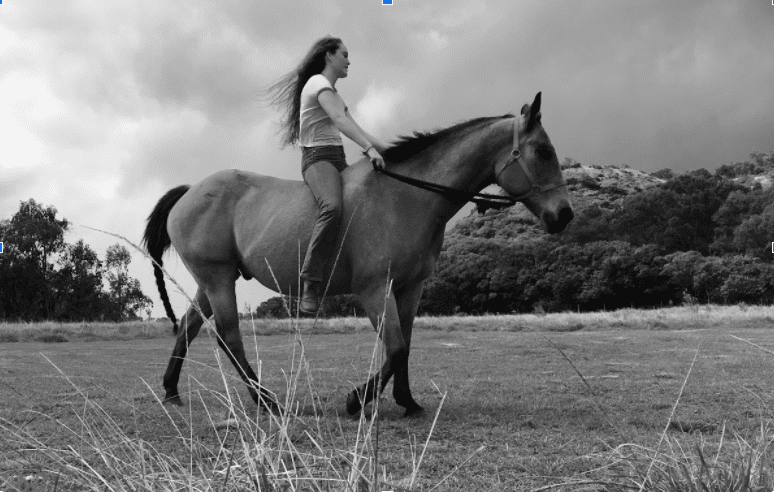
It’s important to remember that developing new goals and habits is not a one-size-fits-all process. It is something that works a little differently for everyone, so play around with your options and trust the process that best suits you. While failure is unfortunate, it is a part of success, to help us learn and grow to better equip ourselves for future accomplishments. As we leave 2020 behind, take this opportunity to get to know you and your horse a little bit better. Then take that clarity, and make it into a specific, measurable, achievable, relevant, timely, and most importantly fantastic goal for an exciting new year.
“Riding a Horse is not a gentle Hobby, to be picked up and laid down like a game of Solitaire. It is a Grand Passion.”
Ralph Waldo Emerson
This Article by Jordan Bastian was originally published in the January 2021 Issue of Irish Sport Horse Magazine.
